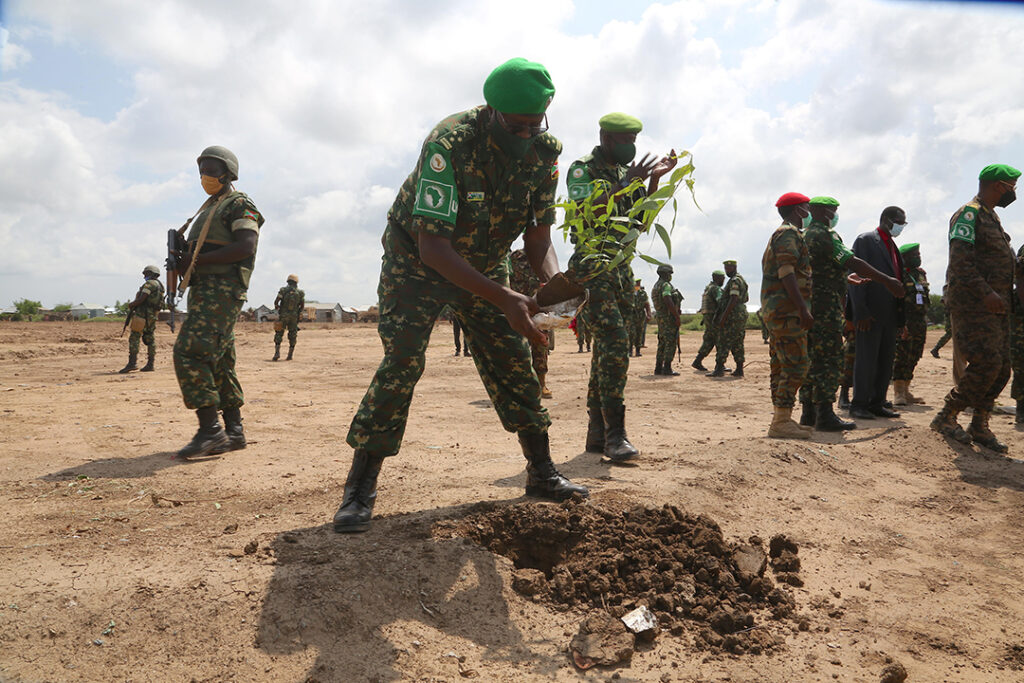ADF STAFF
The African Union Transition Mission in Somalia (ATMIS) was formed on April 1, 2022. By the end of its first year, it plans to begin drawing down troop strength.
But as the country continues to be racked by near-constant attacks from extremists, some are rethinking the strategy. The mission’s current deadline for leaving the country is December 2024.
“We cannot just pack up and leave,” Acting head of ATMIS Fiona Lortan told Kenya-based Nation Media Group. “By securing Somalia, we are securing the countries in the region.”
Civilian casualties have risen in 2022 due to the al-Qaida-linked terror group al-Shabaab that has become entrenched in Somalia since 2006.
According to the United Nations, at least 613 civilians have been killed and 948 injured so far this year — nearly a third more than last year and the highest number since 2017.
Al-Shabaab has destroyed houses, telecommunication antennas, 11 school buildings and a bridge.
They have destroyed and poisoned wells at a time when Somalis are facing extreme drought across the country, as hundreds of thousands face famine.
“Such wanton destruction is reprehensible, particularly given the difficult humanitarian situation, with the consecutive failure of five rainy seasons and large-scale displacement in the country,” U.N. High Commissioner for Human Rights Volker Türk said in a November 14 statement.
“Deliberately targeting civilians and destroying, as such, objects indispensable to the civilian population constitute war crimes under international law.”
ATMIS was created to replace the Africa Union Mission in Somalia (AMISOM), which saw its mandate end earlier this year after 15 years of operation.
The new mission aims to foster military, police and institutional autonomy in Somalia as the AU gradually pulls out. According to the Somalia Transition Plan, which was revised in March 2022, Somali security forces are to fully take over in December 2024.
The mission is in the first of four phases with each spanning nine months except for the final phase, which is planned for six months.
Phase one, which closes at the end of 2022, has seen a reconfiguration of AMISOM into ATMIS along with troop deployments and improved coordination by the East African nations of Burundi, Djibouti, Ethiopia, Kenya and Uganda.
Phase two will see ATMIS and Somali forces jointly design and conduct clearing operations. Some bases will be handed over to the Somali military.
In phase three, ATMIS will hand off the remaining operating bases to Somali security forces, while the final phase will be ATMIS’ complete withdrawal.
“At the end of the day, Somalia has to take responsibility of itself,” Lortan said. “The Somalia Transition Plan, drafted majorly by the Somali government, is in the driver’s seat.”
But the latest attacks by al-Shabaab fighters and the responses from the Somalia National Army (SNA) and ATMIS’ regional forces have prompted Somali authorities to request a delay in this year’s troop drawdown.
In a televised address on August 23, new Somali President Hassan Sheikh Mohamud declared “an all-out war” against al-Shabaab after militants carried out a deadly, 30-hour hotel siege in the capital Mogadishu.
On October 29, two cars packed with explosives blew up minutes apart, followed by gunfire. Al-Shabaab claimed the attack, which killed at least 121 people and injured 333 in Mogadishu — the deadliest attack in Somalia in five years.
Aided by ATMIS forces and recently redeployed U.S. military personnel, the SNA has responded with an offensive to take back territory previously controlled by al-Shabaab in central and southern Somalia.
Local communities have helped, too.
Kenyan deputy sector commander Col. J. Maiyo has used a variety of outreach tactics, including supplying food and medicine.
“We offer weapon training, combat casualty care as well as offer nursing as well as midwifery skills to both military and police officers as well as civilians willing to learn,” he told Nation Media Group.
“The Somali government is trying but they still lack facilities, including military manpower, weapons and even logistical assets to facilitate their forces’ mobility.”
Though no one can say with certainty when the transition from ATMIS to Somali security forces will be complete, there is renewed optimism despite the ongoing bloodshed.
In his farewell speech on October 29, outgoing ATMIS commander Lt. Gen. Diomede Ndegeya said the recovery of the towns and cities is a clear indication of the SNA’s growing capabilities.
“I am pleased that beginning in September of this year, under the leadership of the new government, the local population have joined hands in the fight against al-Shabaab,” he said. “It is certain that there is political will to defeat terrorism in Somalia.”

